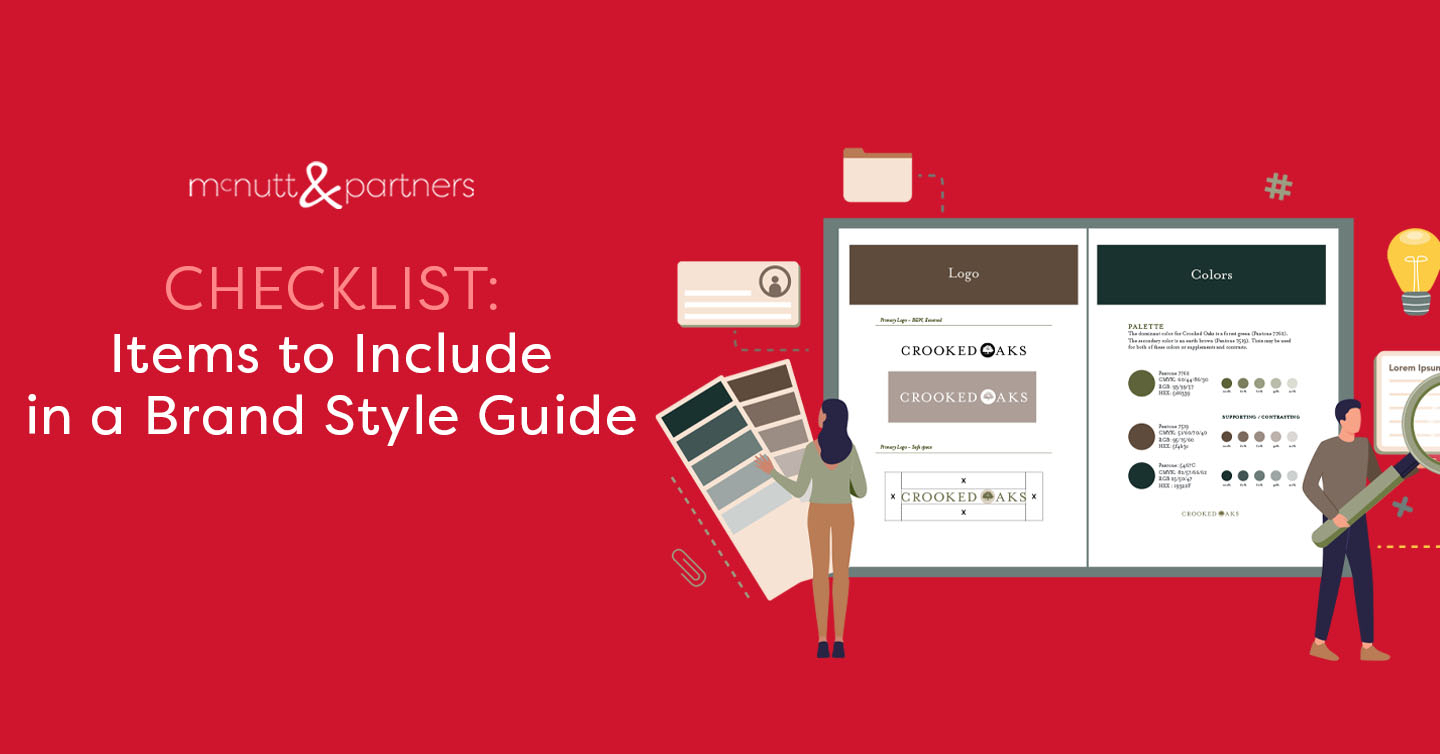Your brand has style. No, it really does! The aesthetic you cultivate as a brand is critical to identifying your business’ personality and attracting the clientele you want. We’ve previously talked about the importance of keeping your aesthetic consistent as a brand using a custom style guide. Now, we’ll break down exactly what items to include in a brand style guide.
Logotype
When it comes to items to include in a brand style guide, your logo is the main attraction. After all, your logo is what your audience uses to make a visual association with your brand—both before they ever cross the point of sale and after they become loyal customers.
Your style guide will include the most current version of your logo, as well as a few others:
Various logo formats
Your most-used logo should not be the only one you define in your style guide. You should also include your logo in any other formats in which it is bound to appear. For instance, you may have both a horizontally-formatted logo and a stacked (vertically-formatted) logo. You may have one with your tagline and one without.
You should also include your logo as it appears in black and white vs. in color, (if your primary logo uses color).
Brand marks
Brand marks are included under the umbrella of logos. Think the “Nike” logo (that actually says “Nike” with the swoosh) vs. the brand mark (just the swoosh alone). Or the McDonald’s golden arches (minus the “McDonald’s”).
Side note—every brand’s goal is to become known by its brand mark alone!
Old (defunct) logos
Have old versions of your logo that have since been replaced by something shinier and newer? Yup, include those in your brand style guide as well. That’s so whoever is doing your designing can be aware that this logo did once exist, but it should not be used in association with your brand any longer.
Logo placement
In addition to the appearance of your logo, your brand style guide should illustrate exactly how your logo should be placed in context.
Relational placement
Brands often have rules for how a logo should be placed on a design in relation to other design elements. These rules ensure that the logo is being showcased in the best way possible. Standards like this could include requiring a certain measurement of empty space on all sides surrounding the logo in any given design, for example.
Placement on various items
There are also guidelines dictating how the logo is placed depending on where you are using it. For example, your style guide may show mock-ups of logo placement on a hat or T-shirt. In addition to showing where it should be placed on those items, the guide may state which version of your logo should be used on clothing items vs. print, for instance.
Colors
Another important one among the items to include in a brand style guide is color. Your brand’s colors can be as identifying as your logo itself (and essentially are one-in-the-same if your logo uses color).
Primary colors and secondary colors
Identify your brand’s primary colors (the core colors associated with your logo) vs. secondary colors (colors used as a complement to primary colors that may be used on your website or other areas of your branding. You should also include contrasting colors that may appear behind your logo.
Brand color formats
Designers use identifying numbers for color consistency that vary depending on whether the colors are appearing on screen vs. in print. Your style guide should list the numbers associated with common color formats. Formats may include Pantone (PMS), CMYK, RGB, HEX and others.
Color proportions
How much of one color should be used in relation to another in designs associated with your brand? The color proportions section of your style guide will illustrate this.
Typeface
Fonts are artistic elements of design themselves. Stay consistent with the fonts you use in association with your brand to avoid confusion and uphold professionalism. Similar to logos and colors, you should include primary and secondary fonts (and where they are to be used), as well as “retired” fonts—i.e., ones you may have used at one time but that you no longer employ.
Social media
You may opt to include a social media section in your style guide that conveys rules for your profile images in relation to logo and color usage. These rules may vary depending on the social platform.
Summary
Your style guide is the roadmap to your brand’s aesthetic. Use this list of items to include in a brand style guide when drawing your unique roadmap.
Want us to make a brand style guide for you? Not sure what your brand standards even are yet? We can help with all of that!
McNutt & Partners is a full-service advertising and digital marketing agency. Contact us today for your marketing needs! Call 334-521-1010, or visit our contact page.

